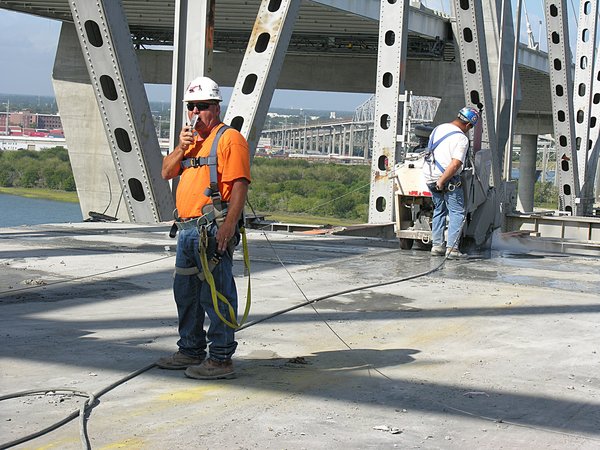September 21 2005: Cutting roadway segments
Meanwhile, managing the removal over the waterways is a different story.
Basically, the debris from the work on the bridge must not enter the water.
To catch the debris, a group of barges are used to span the potential
area of falling debris. While this is great in theory - the continued
use of the ship channel means that each time a ship enters the channel,
the barges must be moved out of the channel and work stopped.
First, an overview. The Cooper River ship channel, the Pearman superstructure
and pair of barges is placed under the roadway to
catch any debris that might fall during the cutting and removal
operations.
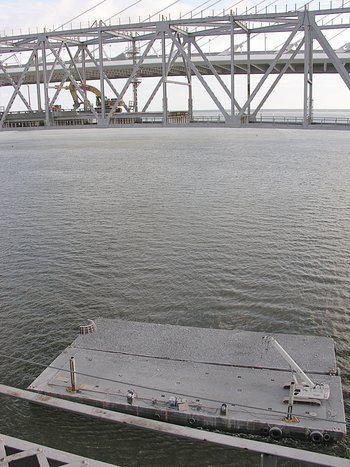
When a ship approaches the channel, not only must work stop while ships
pass under the bridge
but the barges must be moved before and then repositioned after
passage of the ships. Because of
Katrina, the shipping traffic to Charleston has increased dramatically
resulting in frequent work breaks. Entering the work area -
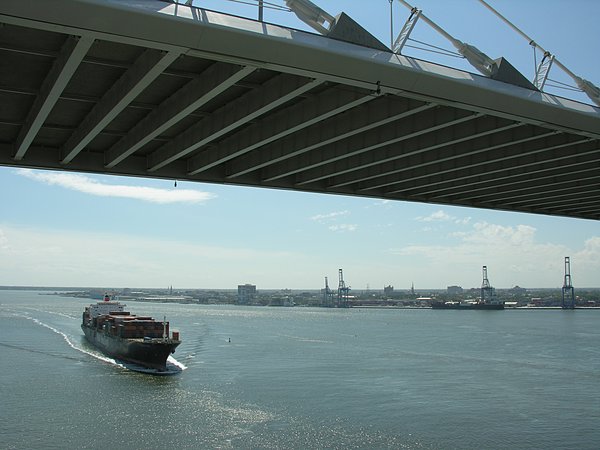
and leaving the work area -

Obviously, the rate of roadway removal is dramatically slowed
which creates a little chillin' time while the ship passes and
barges are repositioned
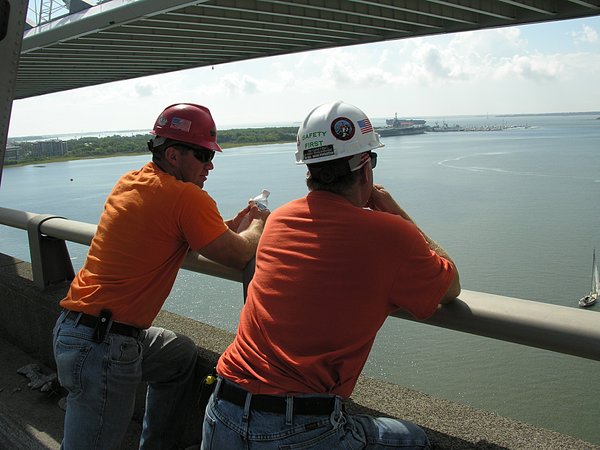
Segmenting the roadway into management chunks
What a surprise to see that removing the roadway is not simply
unpouring the concrete. It is cut in 7 foot segments by a
motorized concrete cutting machine complete with water cooling the
diamond tipped blade (I'm guessing about the blade).
Click for a video of cutting
(11 Mb quicktime)
Here Rich (working for Concrete Cutting and Breaking Inc.) is operating
a 120 HP, V-6 parapet deep-cut saw and is lowering the blade
onto the roadway surface to start a transverse cut (from right to left)
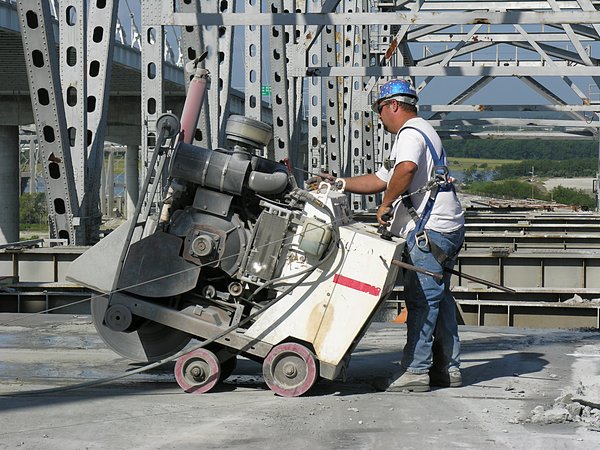
stopping at the edge of the roadway.

and then continuing from left to right
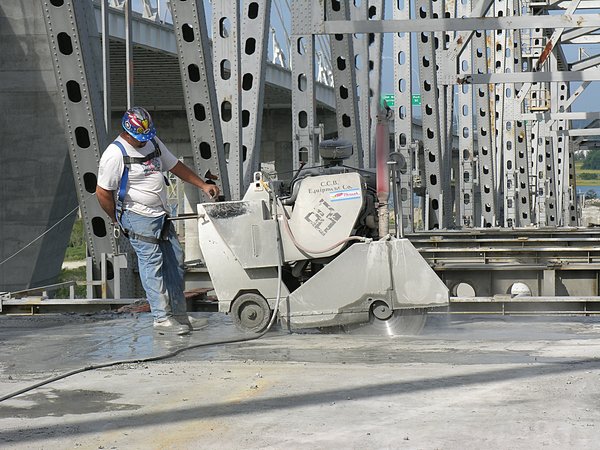
Once the transverse cuts are complete, two longitudinal cuts are made
dividing the strip into 2 segments.
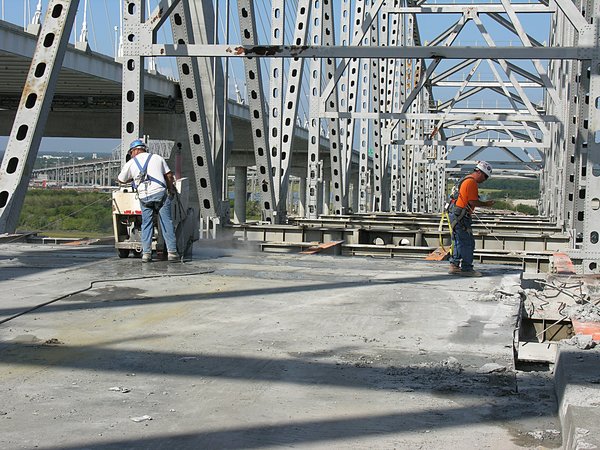
Here Pio is using one of his
modern communication devices to coordinate bridge work with
cargo ship passage up and down the Cooper River.
